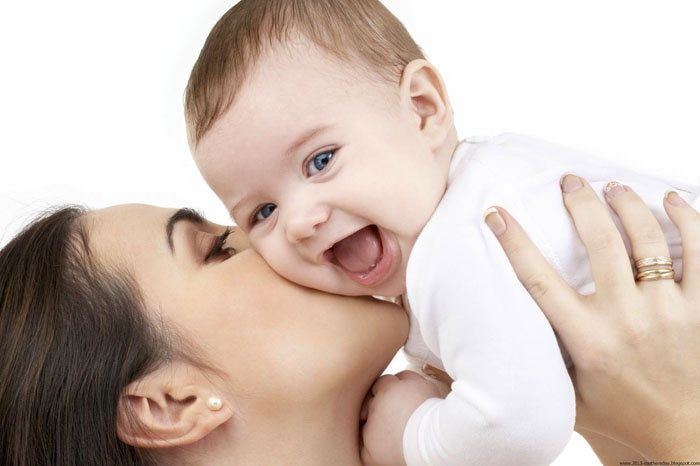Health Problems Of The Young: PCOS And PCOD
Obesity And PCOS And PCOD In Young Ladies
Today millions of girls and young ladies all over the world are suffering from irregular, delayed or total absence of periods and many of them are also suffering from infertility.
They could be suffering from PCOS (polycystic ovarian syndrome) or PCOD (polycyclic ovarian disease).
The exact cause of PCOS and PCOD remains unknown, but they are both multifactorial conditions involving hormonal, genetic, and lifestyle influences.
While PCOS is considered to be a more severe and systemic illness, PCOD is typically considered the milder and more lifestyle-related disease.
It is now recognised that the two main features of both PCOS and PCOD are over production of androgens by the ovaries and insulin resistance. Indians are also known to be more susceptible to insulin resistance. So the incidence of PCOS or PCOD is higher in Indian women.
PCOS often leads to elevated LH (Luteinizing Hormone) levels or an increased LH to FSH (Follicle Stimulating Hormone) ratio, typically over 2:1 or 3:1.
This imbalance disrupts normal ovulation by overstimulating the ovarian theca cells, leading to increased androgen production.
High LH levels contribute to anovulation (failure to release an egg) and the development of multiple ovarian cysts.
Elevated LH is considered a hallmark of PCOS in many cases.
LH levels are not expected to be raised as much in PCOD as in PCOS, but raised levels of androgens is also seen in PCOD.
Delayed or absent periods, excessive hair growth on face and pimples, obesity and enlarged ovaries with multiple cysts are diagnostic features of both PCOD and PCOS.
Many young ladies between 15 to 25 years of age suffer from delayed periods or total absence of periods, weight gain, excessive facial hair growth and pimples and male pattern thinning of hair. Most of them could be suffering from PCOS or PCOD.
But both conditions are prevalent throughout the childbearing age of ladies.
In healthy ovaries, several follicles begin to grow during each menstrual cycle, but only one matures into a dominant follicle that releases an egg during ovulation.
Due to raised levels of LH and androgens and low levels of FSH in PCOS and raised levels of androgens in PCOD, these follicles fail to mature fully and this leads to formation of multiple immature follicles that do not ovulate and remain in the ovaries and appear as small, fluid-filled sacs on an ultrasound, and are often referred to as ‘polycystic ovaries’.
Failure to ovulate leads to irregular or absent periods and infertility and raised levels of androgens leads to pimples, mail pattern hair growth on face and body and hair thinning.
Anovulation is more pronounced in PCOS than in PCOD, that is why the chances of natural conception are much less in PCOS than in PCOD.
While PCOS is described as a more severe and systemic condition, going beyond the ovaries, PCOD is considered as the milder disease, more specific to the ovaries and less systemic and more lifestyle-related.
PCOS is said to affect 10 to 15 per cent while PCOD, 5 to 10 per cent of all ladies. The percentage of PCOS may be as high as 25 per cent in Asian ladies.
PCOS is supposed to cause infertility more than in PCOD, while PCOD ladies are more likely to conceive naturally in spite of PCOD.
The incidence of infertility in PCOS is said to be 70 to 80 per cent while it is said to be 20 to 30 per cent in PCOD.
Ladies with PCOS are more likely to need medical interventions for conception while those with PCOD are more likely to conceive naturally.
Women who conceive in spite of PCOD have a higher incidence of miscarriage, gestational diabetes and hypertension, preeclampsia and premature delivery.
Another feature that is seen in PCOS but is not seen in PCOD is inflammation.
Chronic inflammation increases the risk of development of metabolic syndrome, high blood pressure, insulin resistance, type 2 diabetes, high cholesterol, heart disease and endometrial cancer in ladies suffering from PCOS. This is not the case with PCOD.
The diagnosis of both diseases are confirmed by abdominal sonography and hormonal study.
The line demarcating PCOS and PCOD is essentially blurred as features of both conditions overlap each other considerably.
Irrespective of the name of the condition, early diagnosis and targeted lifestyle changes are key to managing both conditions effectively.
Lifestyle Modifications, balanced nutrition and regular exercise and even 5 to 10 per cent weight loss can address insulin resistance and hormonal imbalances, restore ovulation and improve fertility in both PCOS and PCOD.
Both conditions can also affect ladies who are not overweight or obese.
Eating healthy and exercising regularly is still the effective long term treatment for these ladies, even if they don’t need weight loss.
Both conditions and especially PCOS is often treated with medications like metformin and oral contraceptives with either oestrogen and progestin combined pills or progestin alone pills and medicines to stimulate ovulation and others to treat other symptoms of PCOS.
Lifestyle changes offer long-term benefits for managing symptoms and preventing complications, whereas medications often provide temporary relief and may need to be taken continuously to maintain their effects.
Irrespective of whether it is PCOS or PCOD, eating healthy, beginning to exercise and losing weight usually corrects the cycles and reverses the conditions.
They also significantly lower the risk of developing high blood pressure, insulin resistance, type 2 diabetes, high cholesterol, heart disease and endometrial cancer, associated with PCOS, in later life.
Here both exercise and weight loss seem to influence reversal of the two conditions.
Weight Loss Benefits:
Even a 5-10% reduction in body weight can restore ovulation and menstrual regularity.
Reduce symptoms like excessive hair growth and acne.
Improve fertility.
Lower the risk of long term complications like diabetes and cardiovascular disease.
Exercise Benefits:
Improves Insulin Sensitivity: Enhances the body’s ability to use glucose, lowering insulin and androgen levels.
Reduces Inflammation: Chronic inflammation is common in PCOS, and exercise can help mitigate it.
Supports Mental Health: Reduces stress, anxiety, and depression, which are often linked to PCOS and PCOD.
Boosts Metabolic Health: Improves lipid profiles and reduces cardiovascular risks.
Both conditions and especially PCOS is often treated with medications like metformin and oral contraceptives with either oestrogen and progestin combined pills or progestin alone pills and medicines to stimulate ovulation and others to treat other symptoms of PCOS.
Lifestyle changes offer long-term benefits for managing symptoms and preventing complications, whereas medications often provide temporary relief and may need to be taken continuously to maintain their effects.
Irrespective of whether it is PCOS or PCOD, eating healthy, beginning to exercise and losing weight usually corrects the cycles and reverses the conditions.
This is exactly the treatment we offer for overweight or obese young ladies suffering infertility due to PCOS and PCOD.
We have inspired and helped a large number of young ladies adapt healthy, balanced nutrition and exercise as a lifestyle and lose weight to overcome their obesity, PCOS or PCOD and infertility not only in Pune, but all over the world!
Also read Latest Post ‘Health Problems Of The Young: Hypertension‘ on this website.








